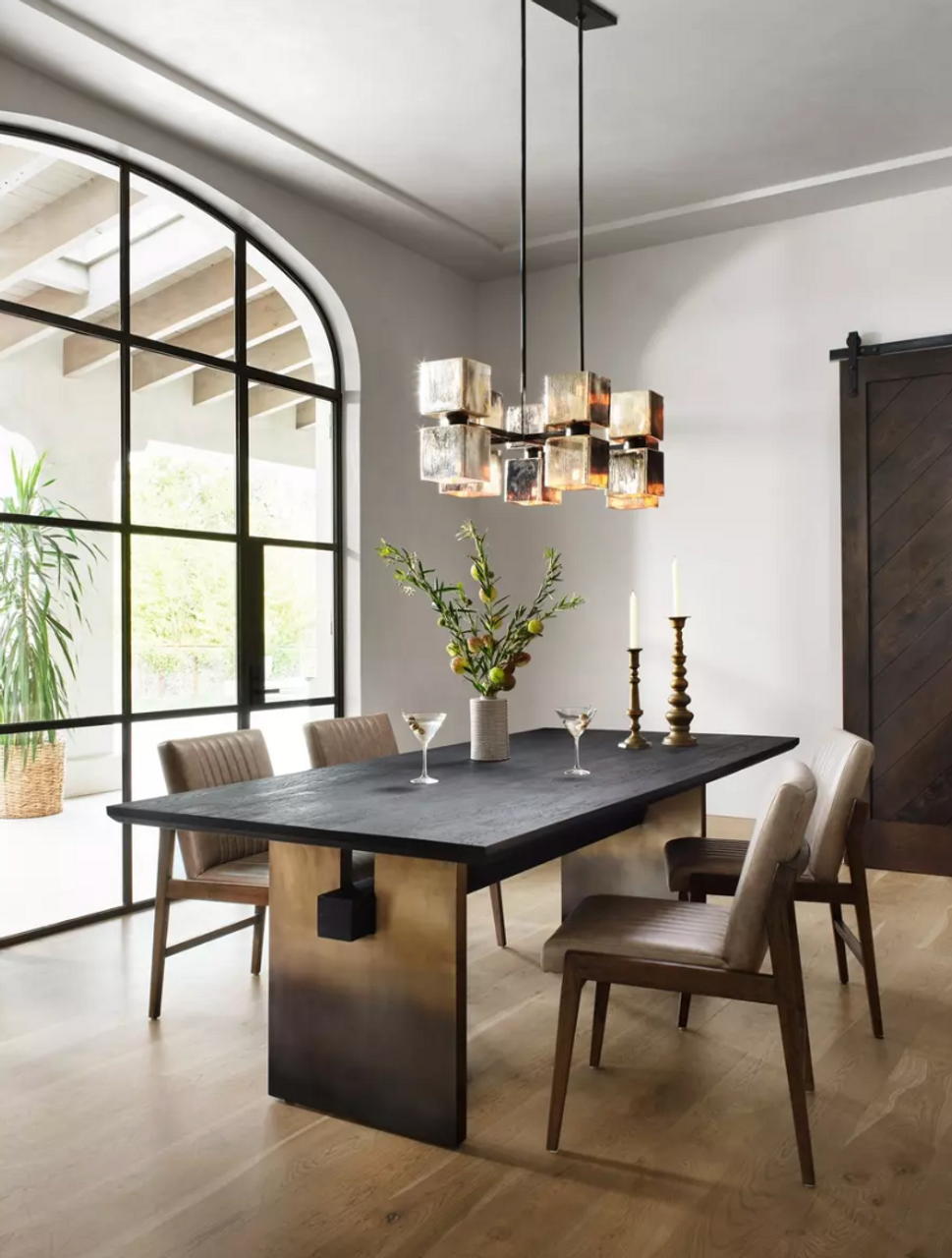Choosing the Perfect Dining Table for Your Space: A Comprehensive Guide
Posted by Erin Rehill on 27th Dec 2023
Selecting the right dining table for your space involves careful consideration of various factors, including size, distance from chairs to walls, shape, and material. Among the myriad options available, solid wood stands out as a timeless and durable choice. In this guide, we'll explore the key elements to keep in mind when picking the perfect dining table for your home.
Size Matters:
The first consideration when choosing a dining table is its size. Measure your dining area to determine the maximum dimensions your table can have without overcrowding the space. Allow enough room for chairs to be comfortably pulled out and for people to move around the table.
Distance from Chairs to Walls:
Space planning is crucial for a well-balanced dining area. Ensure there's enough room for chairs to be pulled out comfortably without hitting walls or other furniture. A general rule is to leave at least 36 inches between the edge of the table and the nearest wall or furniture.
Round, Rectangle, or Square?
Dining tables come in various shapes, each with its own set of advantages and considerations.
- Rectangular Tables:
- Pros: Ideal for larger dining areas and can accommodate more guests.
- Cons: Less space-efficient in smaller rooms.
- Round Tables:
- Pros: Great for smaller spaces, encourage conversation, and have no sharp corners.
- Cons: Seating may be limited, and they may not fit well in larger rooms.
- Square Tables:
- Pros: Efficient use of space, suitable for both small and large dining areas.
- Cons: May not provide as much surface area for larger gatherings.
Consider the size and layout of your dining room, as well as your personal preferences, when choosing the shape of your table.
Exploring Material Options:
Now, let's delve into the diverse world of dining table materials, each offering its own set of characteristics.
- Solid Wood:
- Pros: Timeless appeal, durability, natural beauty, and customization options.
- Cons: Higher upfront cost, occasional maintenance required.
- Marble:
- Pros: Luxurious aesthetic, durability, and resistance to heat and scratches.
- Cons: Heavy, may require sealing, and can be more expensive.
- Stone (e.g., Granite or Quartz):
- Pros: Durable, resistant to heat and scratches, unique patterns.
- Cons: Heavy, may require sealing, and can be more expensive.
- Glass:
- Pros: Creates a sense of openness, versatile, easy to clean.
- Cons: Prone to scratches and fingerprints, may require more frequent cleaning.
- Metal (e.g., Steel or Aluminum):
- Pros: Modern and sleek aesthetic, durable, lightweight.
- Cons: Susceptible to scratches and dents, may require protective measures.
Consider your lifestyle, aesthetic preferences, and maintenance preferences when selecting a material. Solid wood offers timeless elegance, while marble and stone bring a touch of luxury. Glass and metal provide a modern look, and each material has its unique appeal.
Crafting the perfect dining space involves thoughtful consideration of size, shape, and material. From the timeless beauty of solid wood to the luxurious allure of marble and the modern charm of glass or metal, the choice of material can significantly impact your dining experience. Explore the diverse options available, weigh the pros and cons, and choose a dining table material that not only fits your space but enhances the overall atmosphere of your home.
